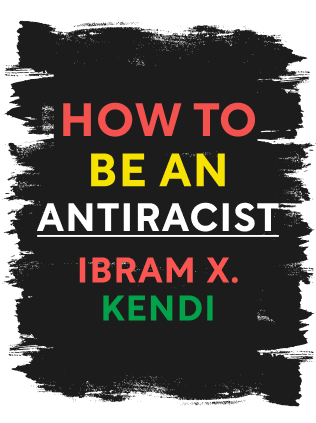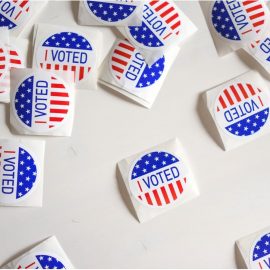

This article is an excerpt from the Shortform book guide to "How to Be an Antiracist" by tIbram X. Kendi. Shortform has the world's best summaries and analyses of books you should be reading.
Like this article? Sign up for a free trial here .
When was the invention of race? How does the origin of race correspond to racism and slavery?
The invention of race did not come before slavery. In fact, the self-serving policy of enslaving Africans was justified by creating the notion of race.
Keep reading to understand how the invention of race came about and the historical context.
The Invention of Race
Race has only existed for about 600 years. Most people think that the origin of race as a concept came first, then people developed racist ideas, and then, finally, people developed racist policies stemming from their racist ideas. However, the true order of events is different: policy created to further self-interest—the lucrative slave trade of Africans—came first, and only then was race invented to justify the policy. Racist ideas came last.
In the fifteenth century, Prince Henry the Navigator wanted to get into the slave trade but didn’t want to work with Islamic slave traders, who were enslaving a variety of people including Europeans, Arabs, and Africans. Prince Henry sponsored voyages to West Africa and focused the Portuguese slave trade on Africans. His ships explored new regions of the continent, including the feared waters around Cape Bojador.
Because the Islamic traders were enslaving people from a variety of areas, their trading policies weren’t racist. However, Prince Henry’s policy, because it focused on a particular group of people, was racist.
In 1453, 20 years after Prince Henry had organized the African slave trade, the King of Portugal commissioned Gomes de Zurara to write a biography of Prince Henry. Zurara invented the African race when he described the people being sold at a slave auction in Lagos, Portugal. He described the people as being different from each other in language, ethnic group, and skin color, but he lumped them into a single group of people who lived like animals and needed to be saved by civilized Europeans, who were inherently superior.
Similarly, the “Indian” or negros da terra (“Blacks from the land”) race was invented by Portuguese and Spanish colonizers after they arrived in the Americas. All Indigenous people were lumped into this group. Alonzo de Zuazo, a Spanish lawyer, compared this race to the Black race, saying that the Blacks were strong and good at work while the Indigenous people were weak.
The goal of the invention of race was twofold:
- To create a hierarchy
- For example, putting Africans into one group, and slave traders and slave owners in another, allowed for comparisons between the groups. Comparison naturally resulted in some groups being superior to others.
- To legitimize treating the groups differently
- For example, thinking of Africans and Indigenous people as inferior groups legitimized their enslavement and murder.
Zurara created the concept of sorting people into groups, but he didn’t actually call these groups “races.” Jacques de Brézé, a French poet, first used the word “race” in a poem in 1481. So, that was the invention of race as a term. Then, in 1606, another Frenchman, Jean Nicot, defined the word “race” in a French dictionary to mean “descent.”
By the 18th century, the Asian and European races were invented. In 1735, Carl Linnaeus color-coded the four existing races as yellow (Homo sapiens asiaticus), white (Homo sapiens euopaeus), red (Homo sapiens americanus), and black (Homo sapiens afer), and he built a hierarchy in his text Systema Naturae. According to Linnaeus, Europeans were at the top and possessed positive traits such as intelligence and muscular bodies. Next were the Asians, who were melancholy, greedy, and haughty. Then the Indians, who were ill-tempered, stubborn, and free. Blacks were at the bottom and were lazy, careless, and ruled by caprice.
Even though race is not a legitimate scientific category, race has meaning because history, culture, society, and policy have given it meaning. It is, therefore, “real.” We have to acknowledge the existence of race in order to become antiracist—we have to identify racially so that we can see how our race is privileging or endangering us.
Event #1: Racist Policies Develop
In the 15th century, Prince Henry the Navigator wanted to get into the slave trade but didn’t want to work with the existing Islamic slave traders, who were enslaving a variety of people, including Europeans, Arabs, and Africans. Instead, Prince Henry sponsored voyages to West Africa and focused the Portuguese slave trade on Africans. Because the Islamic traders were enslaving people from a variety of areas, their trading policies weren’t racist. However, Prince Henry’s policy, because it focused on a particular group of people, was racist (even though the concept of race hadn’t been invented yet).
Event #2: The Invention of Race as a Concept
Twenty years later, it fell to Prince Henry’s biographer, Gomes de Zurara to justify the enslavement of Africans. He did so by inventing the idea of the African race (though he didn’t use the word “race”). In his description of people being sold at a slave auction, he described the people as being different from each other in language, ethnic group, and skin color, but he lumped them into a single group of people who lived like animals and needed to be saved by civilized Europeans, who were inherently superior.
The goal of the invention of race was twofold:
- To create a hierarchy
- For example, putting Africans into one group, and slave traders and slave owners in another, allowed for comparisons between the groups. One could then be superior.
- To legitimize treating the groups differently
- For example, thinking of African people as an inferior group legitimized their enslavement and murder.
Event #3: Racist Ideas Develop
People read Zurara’s work, and other scientists, writers, and philosophers began to make generalizations about race. It took until approximately the 20th century for race to be a concept understood all over the world. Generalizations about race resulted in comparing racial groups, which is the foundation of racist ideas—ideas that imply that one race is in any way superior or inferior to another. The origin of race was a matter of convenience for justifying enslavement.

———End of Preview———
Like what you just read? Read the rest of the world's best book summary and analysis of Ibram X. Kendi's "How to Be an Antiracist" at Shortform .
Here's what you'll find in our full How to Be an Antiracist summary :
- What racism is and how it evolved
- How you might have subtle racist thoughts and not even be aware of them
- Why being "not racist" isn't good enough






